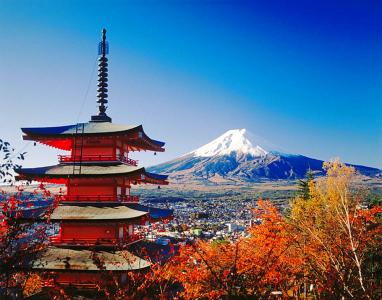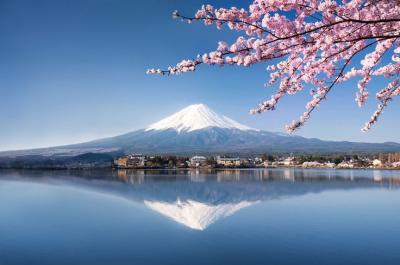Overview
Japan’s Mt. Fuji is an active volcano about 100 kilometers southwest of Tokyo. Commonly called “Fuji-san,” it’s the country’s tallest peak, at 3,776 meters. A pilgrimage site for centuries, it’s considered one of Japan’s 3 sacred mountains.
Description
It is one of Japan's three holy mountains and was first ascended by a monk in 663, with women being forbidden to climb it until the Meiji Era, in the late 1800s. The volcano is now dormant and last erupted in 1708.
Mount Fuji, or Fuji-san, as it is more commonly known in Japan, has been the subject for many artists over the years, from the famous "ukiyo-e" woodblock prints of Hokusai to being printed on the back of a JPY 1000 note.
Since its first recorded depiction on a sliding door in the 11th century, the iconic image of Mount Fuji has been used to decorate commemorative stamps, incense holders, lacquerware boxes, ceramics, clothing, and painted scrolls, to name but a few.
Its iconic profile is the subject of numerous works of art, notably Edo Period prints by Hokusai and Hiroshige.



